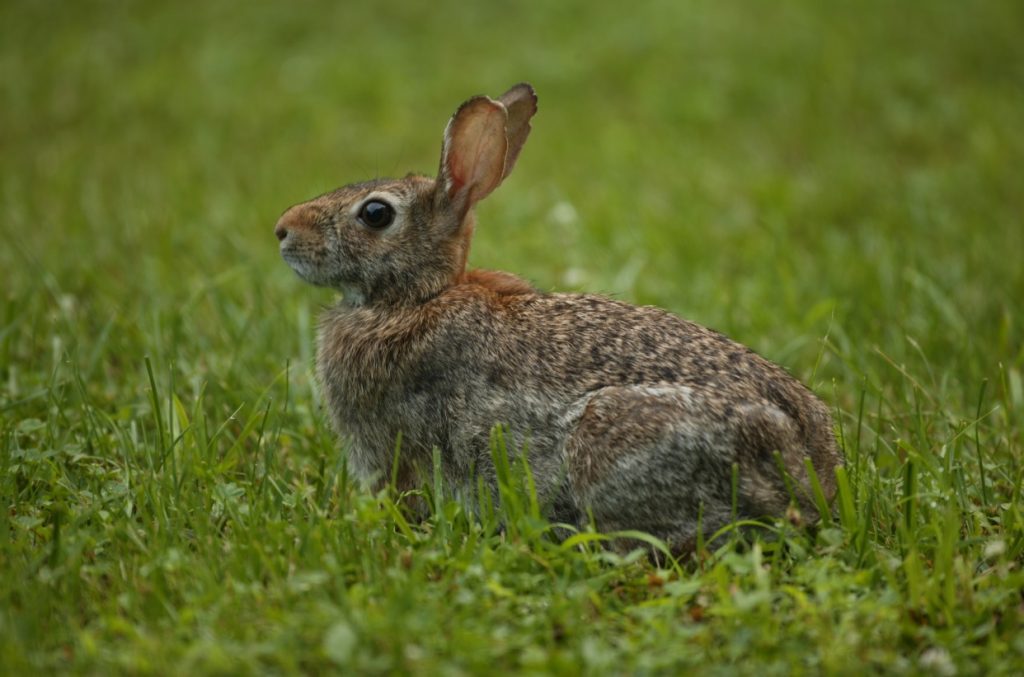
Photo: Adele Hodde, IDNR
Learn more about rabbits in Illinois in OutdoorIllinois Journal:
Cottontail rabbits are an important food source for many predators, including coyotes, foxes, and owls. When rabbit populations are reduced, predator populations also decline.
Eastern cottontails belong to the Leporidae family (rabbit and hare family). Cottontails are easy to identify by their long ears, large back feet, and small tails that are white on the underside. They have buff to brownish gray fur with white undersides. Cottontails typically weigh two to four pounds and are fully grown by six months of age.
The only mammal in Illinois that might be confused with the cottontail is the Swamp Rabbit (Sylvilagus aquaticus). In Illinois, the swamp rabbit is found only in the southern counties. Swamp rabbits are similar in appearance to the cottontail but are larger and have darker, reddish-brown fur. Swamp rabbits are found in thickets or woods bordering swamps and are very good swimmers.
Rabbits have five toes on the front feet and four toes on the hind feet. The prints of their hind feet are about two-and-a-half times as long as the prints of the front feet.
When rabbits hop, the prints of the hind feet are side by side in front of the prints from the front feet. Unless the ground is soft or covered in snow, rabbits will likely not leave any noticeable tracks.
Rabbit droppings are small, dark, spherical, and less than ½ inch in diameter. Two types of pellets are produced.
Cottontails are coprophagous, meaning that they eat their own droppings. A rabbit eats its food quickly and then moves to a sheltered area, where it excretes soft fecal pellets. These pellets are then eaten by the rabbit, allowing it to digest its food in a location that is more protected from potential predators. The reingested pellet is brown (versus black) and lighter in weight, with a straw-like appearance.
Cottontails are abundant throughout Illinois. The highest population densities occur in the southern third and western parts of the state.
During the winter months, cottontails usually feed after dark. At other times of the year, they feed from sunrise until early morning and again around sunset. If the weather is mild and they have adequate cover, they may feed during the day.
When frightened, cottontails sit very still, trying not to be noticed. If a predator gives chase the cottontail will run quickly in a zig-zag pattern to the nearest patch of cover.
Cottontails are an important prey species in the food chain. Many predators, such as coyotes, foxes, hawks, owls, and others depend on cottontail populations as a major food source. When rabbit populations are reduced, predator populations also decline.
Rabbits are not a public health concern. However, they can be carriers of Tularemia. This bacterial disease is fatal to rabbits. People can become infected with the disease by eating undercooked rabbit meat or by handling dead or sick rabbits that are infected. The livers of infected rabbits will be covered with small white spots. Risk of human infection is low since most infected rabbits die before hunting season begins. When handling dead rabbits, be sure to wear rubber gloves and to wash your hands thoroughly with warm, soapy water.
Cottontails are found in open spaces near woody cover. They are abundant where grass fields adjoin fence rows or other brushy areas. In urban areas, they are common in grassy areas with brush piles or groupings of ornamental shrubs, groundcover, or tall grasses nearby where they can take cover from predators and inclement weather. They typically avoid wet habitats, such as marshes, and dense woods or short grass with no nearby cover. Since rabbits are a prey species, it is important for them to use habitats with shelter, nest sites, and feeding areas in close proximity to one another.
Cottontails spend their lives in a fairly small area, typically 10 acres or less. Home ranges of one to five acres have been reported in central Illinois. Rabbits use forms (shelters made from grass or weeds) and scrapes beneath the cover of vegetation. In the winter, they may use an underground burrow that has been abandoned by a woodchuck or other species.
Cottontails eat many kinds of plants, including grasses, clovers, alfalfa, plantain, and dandelions. In the winter, they survive by eating woody vegetation such as bark, buds, and twigs. If they live in an urban area, they may eat garden plants such as lettuce, peas, beans, and beets. Other garden crops, such as corn, squash, tomatoes, cucumbers, and potatoes, are typically less preferred and tend to be damaged less often. Cottontails will also eat or damage many plants common in urban landscaping. They seem to prefer plants in the rose family, such as the bark of apple or cherry trees and blackberries. However, if they are hungry, rabbits will eat just about any plant. Here’s a short video of a rabbit feeding in the winter.
Cottontails are polygamous (mating with several individuals), and they start breeding when they are as young as six months old. They breed from February through September, with the peak occurring between March and May. Gestation is 28 to 30 days, with four to six young born per litter. Cottontails often have three litters per year.
To nest, the female rabbit digs a small, shallow depression about the size of a woman’s hand. The nest is lined with grass and the female’s fur. The top of the nest is camouflaged with grass and leaves. The young are born blind and without fur, but within a week their eyes are open, and by the second week their fur has grown in.
If you find a rabbit nest, do not disturb the young or the nest. The female has not abandoned her young. To keep predators from finding the young, the female only visits the nest twice a day to nurse them, typically once in early morning and again in the evening. Young rabbits develop quickly and will leave the nest when they are about three weeks old. The best way to protect young rabbits in your yard is to leave them in their nest. Keep cats and dogs away from the area, and be careful when mowing overgrown lawns.
Cottontails have a short lifespan and typically live less than a year. They have many predators, including coyotes, bobcats, foxes, hawks and owls, weasels, and mink. When they are young, they may be killed by cats or snakes. Many cottontails are killed each year by vehicles, and young that are still in the nest are sometimes injured or killed by lawnmowers or weed trimmers.
Rabbits can cause homeowners considerable frustration when they damage plants in the garden, orchard, or landscaping. To identify damage caused by rabbits look for a clean 45-degree cut that clips off flower heads, buds, or small stems. There may also be evidence of gnawing on bark or stems of woody plants, particularly during the winter months.
Damage caused by rabbits is different from damage caused by deer, but it can be confused with damage caused by voles or squirrels. Deer do not have sharp incisors like rabbits, so instead of neatly clipping the vegetation as rabbits do, deer twist and pull the plant when browsing. Deer browsing typically gives vegetation a shredded appearance.
One way to reduce the potential for damage caused by rabbits is to remove potential places that rabbits might take cover. Remove brush piles, weed patches, stone piles, and other debris, and keep grass cut short.
If you have a small area or certain plants that you wish to protect from rabbits, exclusion can be effective. Wire mesh fencing can keep rabbits out of garden areas. A four-foot-wide roll of wire mesh fencing should be used to exclude rabbits. The mesh size (one inch square or smaller) should be small enough to prevent both small and full-grown rabbits from slipping through. The bottom six inches of wire should be bent outward and then buried six inches deep to prevent rabbits from burrowing under the fence. This will allow three feet of fence to remain above ground. The fence must be tall enough that rabbits cannot get over it during periods of snow cover.
Young trees or small shrubs can be protected with cylinders of wire mesh fencing (1⁄4″ x 1⁄4″ square openings). The cylinder should extend at least a foot higher than the expected snow depth. The fencing should also be placed far enough out from the plant that it will not impede the plant’s growth.
There are many commercially available repellents to deter rabbits from eating plants. Many of these products contain the fungicide Thiram. The products are taste repellents and are applied directly to the plant. The products will need to be reapplied as the plants develop new growth and after heavy rains wash off the product. Additionally, these products are not approved for use on plants intended for human consumption and should not be used on garden plants or fruit trees.
Use of repellents will not guarantee plant safety. If there is a large rabbit population, or if food is scarce, rabbits will eat treated plants if other food sources are not available.
If you have a large rabbit population to contend with and other damage control methods have failed, you can apply for a nuisance animal removal permit from an IDNR wildlife biologist. The biologist can provide information on options for resolving problems, including issuance of a nuisance animal removal permit.
The IDNR has more information about hunting Game animals. Current hunting and trapping seasons can be found in the Illinois Digest of Hunting and Trapping Regulations or in the Legal Status section below.
In Illinois, the eastern cottontail is protected as a small game animal. Rabbits in urban areas that become nuisance animals may be trapped and removed if a nuisance animal removal permit is issued by an Illinois Department of Natural Resources district wildlife biologist.
In rural areas rabbits may be hunted during November through mid-February by individuals possessing a hunting license. The IDNR has set a daily bag limit of four rabbits, with a possession limit of ten. Current hunting and trapping seasons can be found in the Illinois Digest of Hunting and Trapping Regulations.
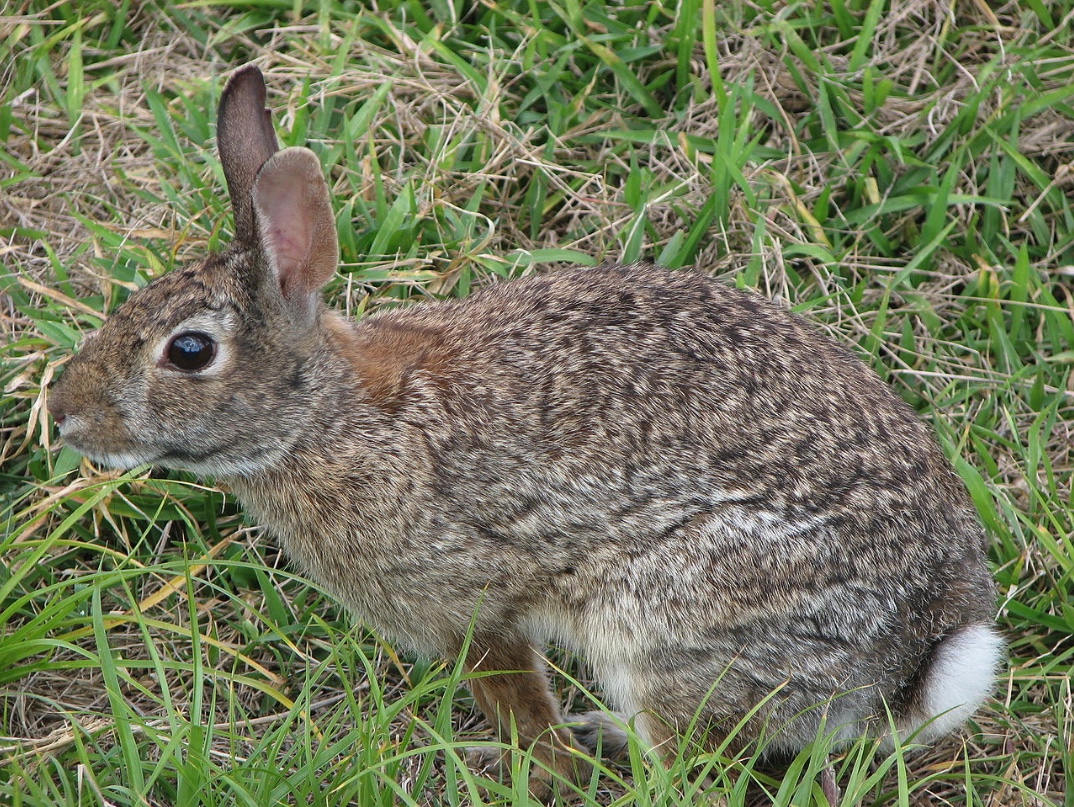
Photo: Harvey Henkelmann, public domain
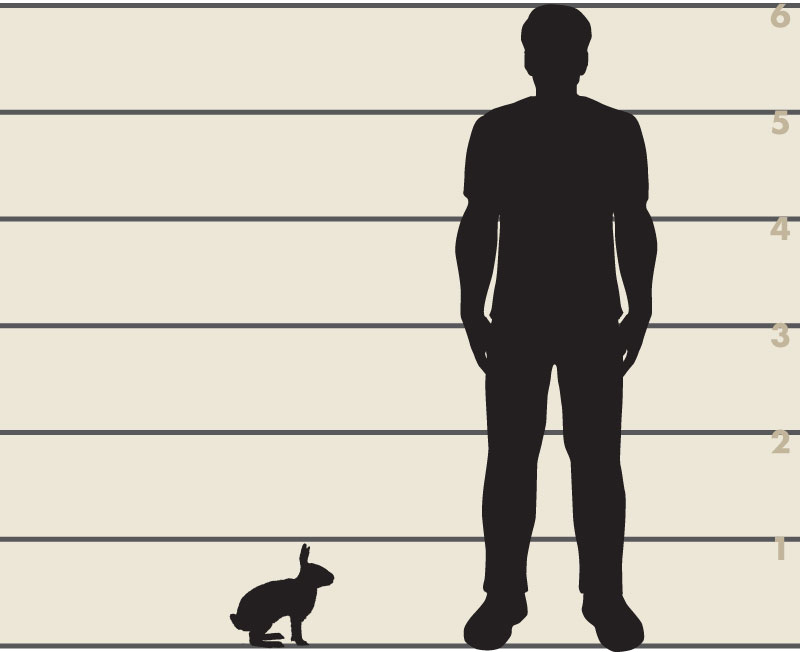
Illustrator: Lynn Smith
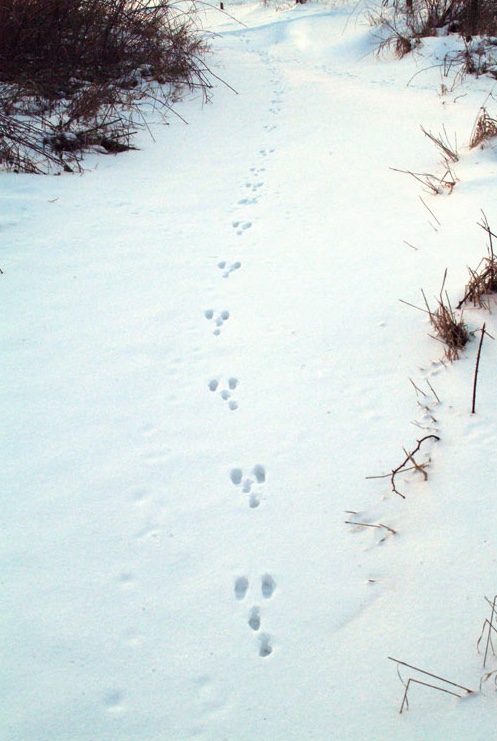
Photo: Steve Severinghaus
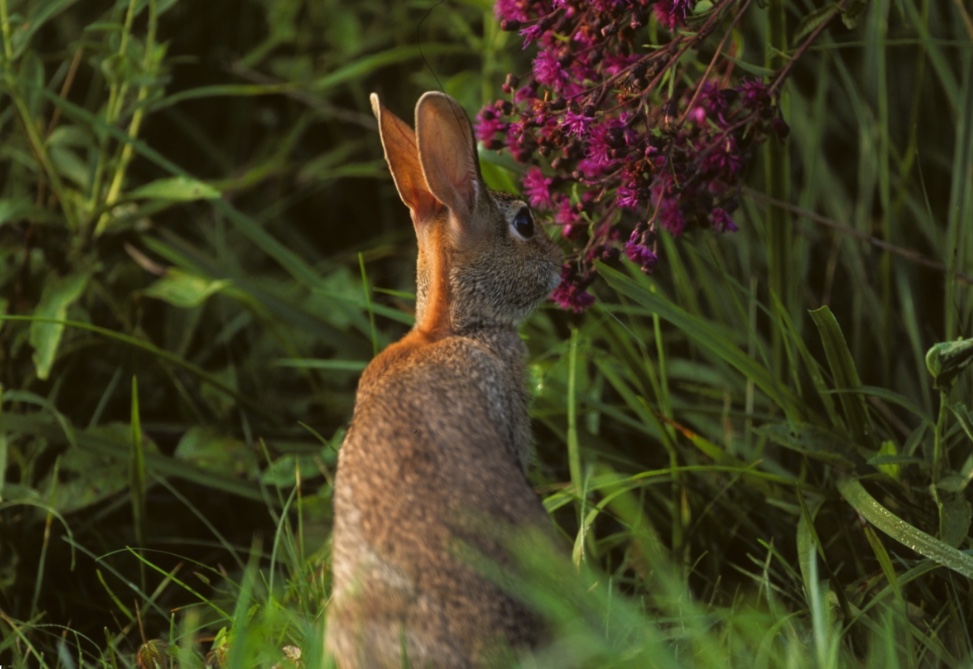
Photo: Adele Hodde, IDNR
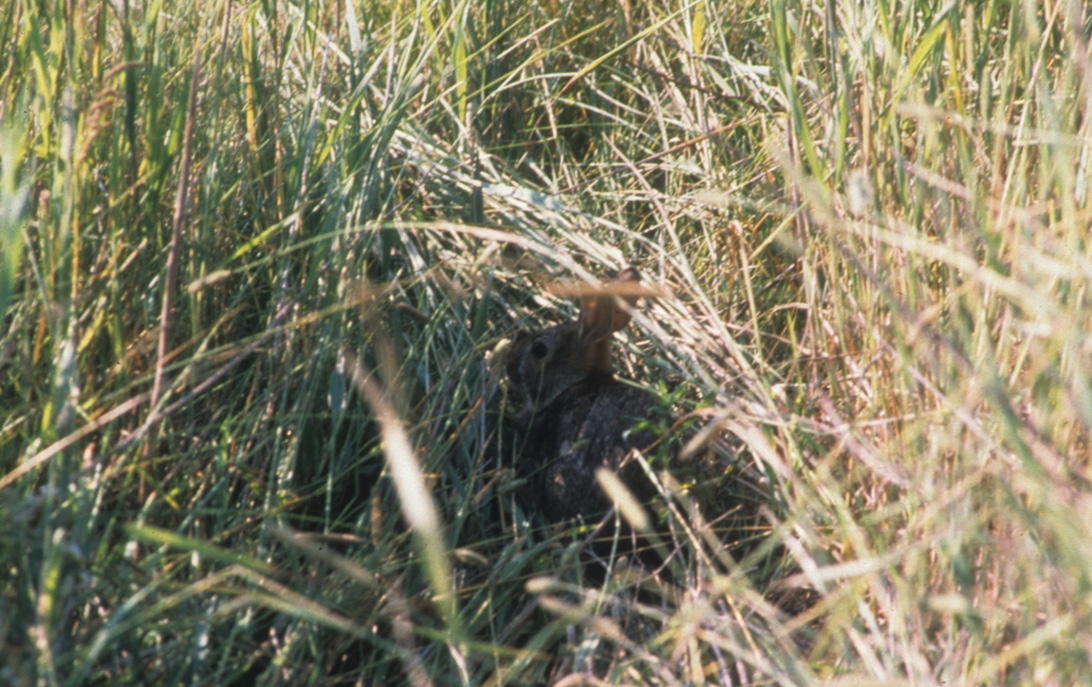
Photo: IDNR image library
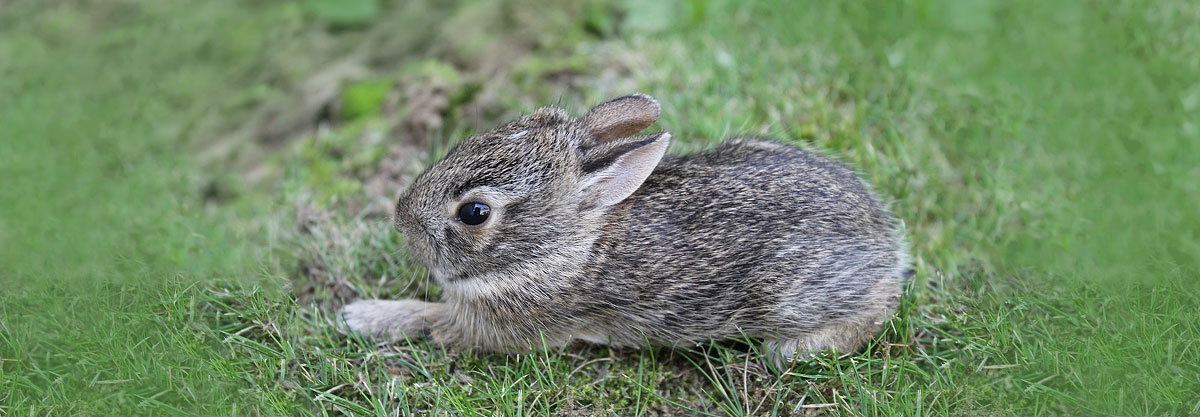
Photo: Creative Commons, CC0 public domain
The Wildlife Illinois website was authorized by the Illinois Department of Natural Resources (IDNR) in partial fulfillment of project W-147-T. The website was developed by the National Great Rivers Research and Education Center, 2wav, and the IDNR in partnership with the United States Department of Agriculture Animal and Plant Health Inspection Service Wildlife Services and University of Illinois Extension to provide research-based information about how to coexist with Illinois wildlife.